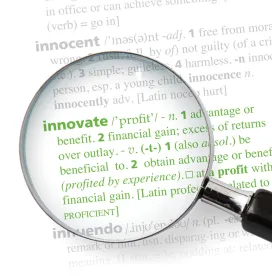There are currently a number of government agencies providing a variety of grant programs for renewable energy development programs by private companies. The U.S. Department of Agriculture, U.S. Department of Energy and the U.S. Environmental Protection Agency all have a number of different grant programs available for renewable energy development. What is often not appreciated, however, is that most federal grants contain underlying provisions which can dictate who can own and use any intellectual property created by the grantee company using, at least a portion of, federal funds,
Most federal grant programs are subject to the Bayh-Dole Act (codified in 35 U.S.C. § 200-212, and implemented by 37 C.F.R. 401). This act provides U.S. universities, small businesses and non-profits the opportunity to control and own any intellectual property of inventions that result from federal funding, but also provides obligations with respect to such intellectual property in regards to the federal government. Management of these obligations to the federal government can be critical, as missteps can lead of loss of all intellectual property rights to the grantee of inventions developed using federal funds.
Obligations of the Grantee to the Granting Agency with respect to Intellectual Property
In general, under the Bayh-Dole Act any intellectual property rights in inventions developed under federal funding can be owned and controlled by the grantee. The federal government, however, retains the right to make and use such inventions without answering to the grantee. In order for the grantee to obtain and maintain ownership in any such invention it must comply with a number of various provisions, including:
- Grantee must report any new invention to the granting agency in writing within two months of its disclosure to the grantee by the inventor.
- Grantee must request title to invention prior to:
- Two years from date reported to the granting agency
- 60 days prior to statutory deadlines created by public use of the invention
- Grantee must file a patent application within two years of the disclosure to the grantee by the inventor, with all the costs being at the expense of the grantee.
- Grantee must show the granting agency attempts to commercialize invention
- Grantee must share royalties in the invention with the inventors
- Grantee must inform the granting agency of any changes in status of patent application.
If the grantee doesn’t follow it’s obligations to the granting agency, ownership in the invention can vest solely in the federal government.
March in rights of the Federal Government
Even if the grantee complies with all of the obligations to the federal granting agency and obtains and controls the intellectual property created using federal funds, not only does the government maintain the right to practice the invention for itself without answering to the grantee, in certain circumstance the government can execute “march-in” rights and grant licenses to private third parties to practice the inventions without answering to the grantee. These “march-in” rights are strictly limited and can only be exercised if the granting agency determines, following an investigation, that at least one of four enumerated criteria in the act are met. The most important of these criteria are a failure by the contractor to take "effective steps to achieve practical application of the subject invention" or a failure to satisfy "health and safety needs" of consumers. Though these “march-in” rights are, in theory, quite powerful, it has not proven so in terms of its practical application. To date, no federal agency has exercised its “march-in” rights
Intellectual Property Traps when applying for Federal Grants
Even applying for federal grants can be a risky proposition for potential grantees. If grantees disclose proprietary technical information to the federal government in their grant applications, such disclosure may count as a “public disclosure” and act as a bar for the grantee to obtain patent protection on any disclosed invention, regardless of whether they obtain the federal grant. Under U.S. law, a patent must be filed on an invention within one year of the public disclosure of the invention, or the offer for sale of the invention. Many grant applications are not held in confidence, and thus any inventions or proprietary technology disclosed in grant applications may count as a public disclosure and be used to bar the subsequent patenting of such technology by the inventor. When a company is thinking of applying for a federal grant, and is including technical information in such a grant proposal, it is the best practice for the company to file at least a provisional patent application covering the technology which is disclosed (if the company wants to preserve it’s patent rights to technology). This provides evidence of the company’s proprietary rights in the technology prior to the federal grant and will preserve the company’s rights to pursue the patenting of the technology.
Summary
While the availability of obtaining federal funds to help companies develop and commercialize their renewable energy technologies is appealing, businesses must carefully consider the impact receiving these funds will have on the intellectual property that they create, and the obligations they will need to meet to the granting agencies with respect to such intellectual property.




 />i
/>i
